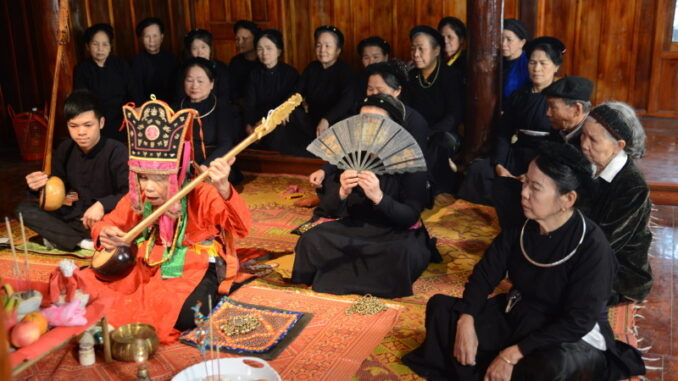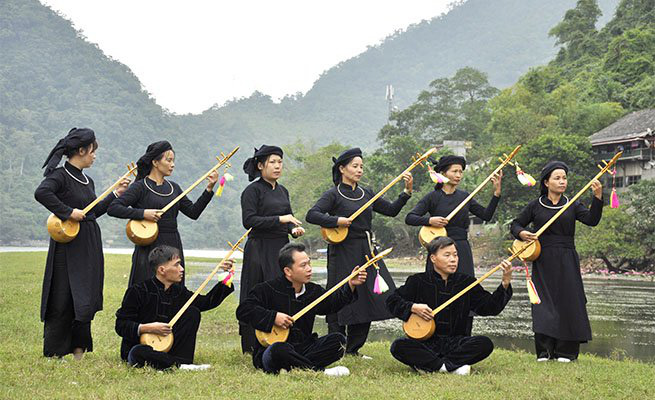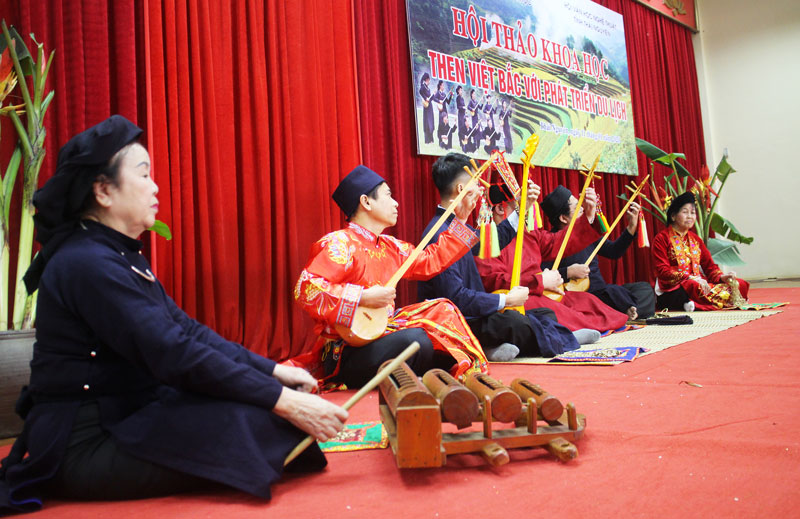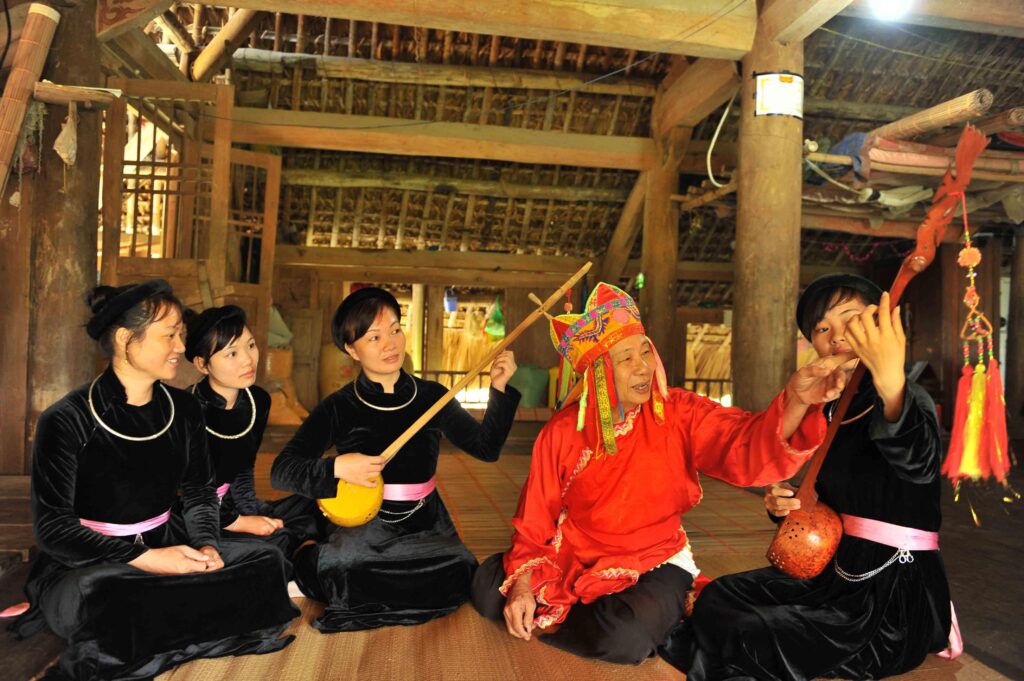
Then master is the intermediary who transmits information between mortals and the spirit world. In terms of dialect, Then has many different names, such as Slin, Xen, Slian, Buddha, Put, Mot, Vut, Giang, Chang… In terms of content, Then practice is a spiritual bridge between the human world and the world. supernatural world. From its inception until now, Then has been a part of culture with great spiritual influence in the lives of Tay and Nung ethnic groups. Then has a humanistic meaning, educating people about good things in life.
History
The history of Practices of Then by Tay, Nung, and Thai Ethnic Groups can be traced back to ancient times, when Tay, Nung, and Thai people lived in the mountainous regions of northern Vietnam. Then it was used as a way to communicate with the spirits of ancestors and deities and to ask for their help with a variety of problems, such as illness, bad luck, and infertility.
Over time, they evolved into a complex and sophisticated system of beliefs and practices. It became an important part of the cultural identity of Tay, Nung, and Thai people, and it was used in a variety of contexts, including festivals, weddings, funerals, and healing ceremonies.
In the early 20th century, the French colonial government attempted to suppress them, along with other aspects of Vietnamese culture. However, the practice continued to be practiced in secret, and it experienced a revival after Vietnam gained independence in 1945.
Outstanding value
The outstanding value of Practices of Then by Tay, Nung, and Thai Ethnic Groups lies in its unique and complex system of beliefs and practices, which is characterized by a number of unique features, including
– Its role in preserving and transmitting traditional Vietnamese culture and spirituality: Practices of Then is a living tradition that has been passed down from generation to generation for centuries. It is a way for Tay, Nung, and Thai people to connect with their cultural heritage and transmit their values and traditions to future generations.
– Its emphasis on community and social cohesion: Then is often performed at festivals and other community events. This helps to strengthen community bonds and promote cultural identity.
– Its use of traditional music, dance, and storytelling: Practices of Then is a highly creative and expressive art form that incorporates a variety of traditional Vietnamese music, dance, and storytelling techniques. This makes it a powerful tool for cultural education and entertainment.

– Its role in healing and well-being: Practices of Then are also used to perform healing rituals and to provide spiritual guidance and support. This makes it an important part of the traditional healthcare system of Tay, Nung, and Thai people.

– The importance of respecting and celebrating cultural diversity: Practices of Then are a reminder of the rich diversity of human culture and spirituality. It is a celebration of the unique traditions of Tay, Nung, and Thai people, and it teaches us to respect and appreciate all cultures.
– The importance of living in harmony with nature: Practices of Then are deeply rooted in the natural world. It teaches us to respect and protect nature and to live in harmony with our environment.
– The importance of community and social cohesion: Practices of Then is a reminder that we are all interconnected and that we need to work together to build strong and supportive communities. in my opinion
Overall, Practices of Then by Tay, Nung, and Thai Ethnic Groups is a unique and valuable cultural tradition that embodies a number of important universal values. It is a living tradition that continues to play an important role in the lives of Tay, Nung, and Thai people, and it is a source of inspiration and enrichment for people all over the world.
Practice of Then in the community

There was a time when Then was considered a type of superstition, so it was forbidden to practice in life. During that period, masters often had to commit to not continuing to practice, and people were not allowed to invite masters to their homes to worship.
The wrong ideas of that period had a very negative impact on the development of Then. From the early 1970s to the late 1980s, the number of artisans of Tay and Nung people decreased sharply. Entering the early 1990s, the perception of Then began to change, especially when entering the 21st century, along with the movement to preserve traditional cultural values, the practice was also part of the culture.
Currently, in terms of Then beliefs, the number of young artisans is increasing, they are both educated and knowledgeable about customs and traditions and are the core force in preserving culture. traditional. As of 2021, Lang Son province has over 600 Then artisans, many artisans have been awarded the title of People’s Artists by the state (Mo Thi Kit, Nong Thi Lin, Mong Thi Sam), elite artisans; In particular, there are many artisans who are young in age but not young in career.
In particular, many Then artisans have high levels of education, with bachelor’s and master’s degrees; There are artisans who both do Then and are state civil servants. They are the pioneers in preserving traditional culture, promoting and spreading the beauty of national culture to friends at home and abroad.
Regarding Then arts, since the beginning of the 21st century, folk song preservation clubs have been established in provinces where large numbers of Tay and Nung people live. Since its inception in 2010, Lang Son Provincial Folk Song Conservation Association has made great contributions to the work of preserving folk songs in general and Then practice in particular.
Conclusion
In 2019, the Practices of Then by Tay, Nung, and Thai Ethnic Groups were recognized by UNESCO as the Intangible Cultural Heritage of Humanity. This recognition has helped to raise the profile of the art and promote its preservation and revitalization.
Today, Practices of Then by Tay, Nung, and Thai Ethnic Groups are still a vibrant and living tradition. It is practiced by millions of people in Vietnam, and it continues to play an important role in the cultural and spiritual lives of Tay, Nung, and Thai people.
Get an opportunity to visit Intangible World Cultural Heritage in Vietnam through Vietnam E-Visa!